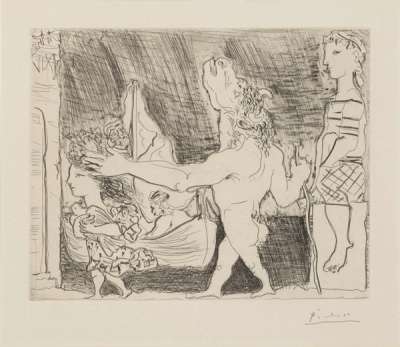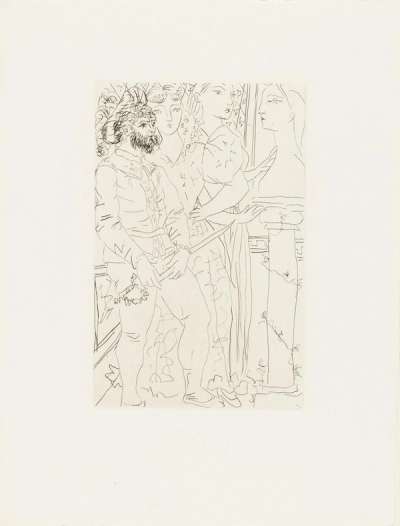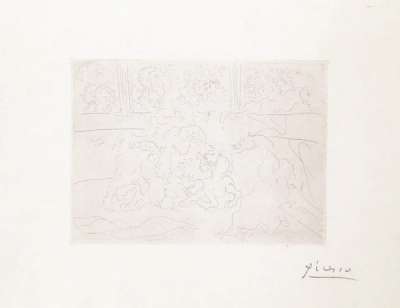La
Suite Vollard
La Suite Vollard by Pablo Picasso, a series of etchings created between 1930-37, stands as a monumental achievement in the artist’s oeuvre. This collection encompasses themes of the Minotaur, the artist and his model, and the classical figure of the sculptor, showcasing Picasso's mastery over the etching medium and his deep engagement with classical and personal mythologies.
Pablo Picasso La Suite Vollard For sale
La Suite Vollard Value (5 Years)
With £12375 in the past 12 months, Pablo Picasso's La Suite Vollard series is one of the most actively traded in the market. Prices have varied significantly – from £1358 to £16869 – driven by fluctuations in factors like condition, provenance, and market timing. Over the past 12 months, the average selling price was £3093, with an average annual growth rate of -4.11% across the series.
La Suite Vollard Market value
Auction Results
Sell Your Art
with Us
with Us
Join Our Network of Collectors. Buy, Sell and Track Demand
Meaning & Analysis
Pablo Picasso's La Suite Vollard is considered one of the 20th century's most significant achievements in the printmaking field, offering a profound insight into the artist's creativity. Named after the art dealer Ambroise Vollard, who commissioned the series, these works delve into various themes that preoccupied Picasso throughout his career, including the erotic, the mythological, the autobiographical, and his fascination with the classical past.
The series is notable for its exploration of the Minotaur myth, a motif that Picasso revisited multiple times, reflecting his identification with the creature as a symbol of primal force and creativity, as well as vulnerability. Works like Minotaure Aveugle Guidé Par Une Fillette II embody this duality, portraying the Minotaur as both powerful and dependent, guided by innocence.
In addition to the mythological narratives, La Suite Vollard extensively explores the artist and model theme. Pieces such as Sculpteur, Garcon Et Modèle Avec Un Groupe Sculpté Représentant Le Rapt D'Europe reflect Picasso's introspection on the creative process and the complex dynamics between the creator and his subjects. These works reveal not only Picasso's technical virtuosity but also his deep contemplation on art's nature, the creative process, and the eternal pursuit of beauty and truth.
Furthermore, the series is imbued with references to other artists Picasso admired, such as Rembrandt, as seen in Rembrandt Et Femme Au Voile and Rembrandt Et Têtes De Femme. These pieces signify Picasso's dialogue with the art historical canon, positioning himself within the lineage of great masters while asserting his revolutionary contributions to modern art.


















